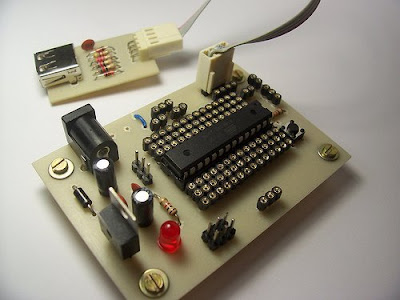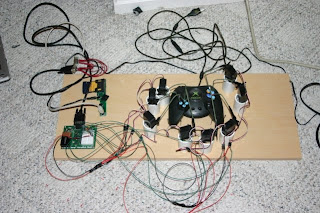
So, the solution was to replace the two transistors, that were used to adapt the RS-232 voltage levels to TTL voltage levels, with a USB to RS-232 chip such as FT-232BM.
This programmer worked perfect with AVRprog (zip file) but it could work with AvrOspII V5.47 also.
Download the source code, firmware, programming software, schematic and PCB for this programmer here
[source]

























